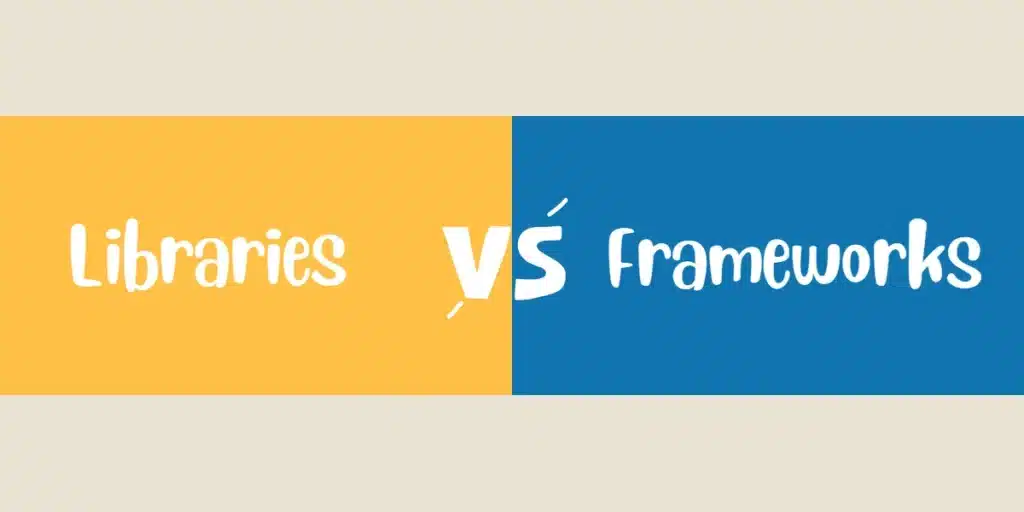In software development, the terms “Framework” and “Library” are frequently used. While these concepts are essential, their differences might not be clear to everyone.
Understanding these concepts
What is a framework?
- Definition
- How does it work?
- Example

What is a library?
- Definition
A library is a collection of functions, classes, or pre-written modules that developers can use to accomplish specific tasks within their projects. Unlike a framework, a library does not impose any structure or specific flow on application development. It simply offers tools that developers can call at their discretion to perform specific tasks, such as data manipulation, API interaction, or user interface management.
- How does it work?
When using a library, developers maintain full control over the application’s flow. They “call” the functions or classes of the library according to the specific needs of their project.
- Example
Consider React, a widely used JavaScript library for creating dynamic user interfaces. Unlike a framework like Angular, React does not define how the whole application should be constructed. Developers can utilize React as they deem fit, integrating it into an existing application or creating a new user interface from scratch, while relying on other tools to manage additional aspects of the application.

Technical differences
It is crucial to understand the technical differences when comparing a framework and a library.
- Inversion of Control vs Direct Call
One of the most significant distinctions is the concept of inversion of control (IoC). In a framework, control is inverted: the framework determines the program’s flow and invokes the developer’s code at specific points. Consequently, developers must adhere to the rules and structures imposed by the framework.
Conversely, a library provides full control to developers. Developers call the library’s functions or classes as needed, without any imposed structure or flow from the library.
- Structure vs Flexibility
A framework imposes a rigid structure on the application. It defines a specific architecture that developers must follow, often according to a model like MVC (Model-View-Controller) or MTV (Model-Template-View). This structure aids in managing complex projects by offering a standardized foundation but can also restrict creativity or flexibility.
A library requires no specific structure. Developers can integrate it flexibly into any project type, whether for a minor feature or a crucial part of an application.

Summary
The table below summarizes the points discussed here:
| Characteristic | Framework | Library |
|---|---|---|
 Definition |
A set of rules and predefined structures for developing complete applications. | A collection of pre-written functions or classes for accomplishing specific tasks. |
 Control |
Inversion of control: the framework controls the application's flow. | The developer controls the application's flow and calls the library as needed. |
 Structure |
Imposes a specific architecture and structure. | No imposed structure, can be used at the developer’s convenience. |
 Flexibility |
Requires following the framework's conventions. | Can be used in different contexts and architectures. |
 Complexity |
May be complex to master due to imposed conventions and structure. | Less complex, as it focuses on specific tasks without imposing a global structure. |
 Use case |
Ideal for developing complete applications or complex systems. | Ideal for adding specific features to an existing application or for projects requiring more flexibility. |
 Example |
Angular, Django, Ruby on Rails | React, jQuery, Lodash |
 Learning curve |
Longer due to the concepts and structure imposed by the framework. | Shorter, as integrating the library is often simpler. |
Conclusion
Frameworks and libraries offer distinct approaches to software development. The choice hinges on specific needs: a framework provides a coherent and complete structure, while a library offers greater flexibility and control.










